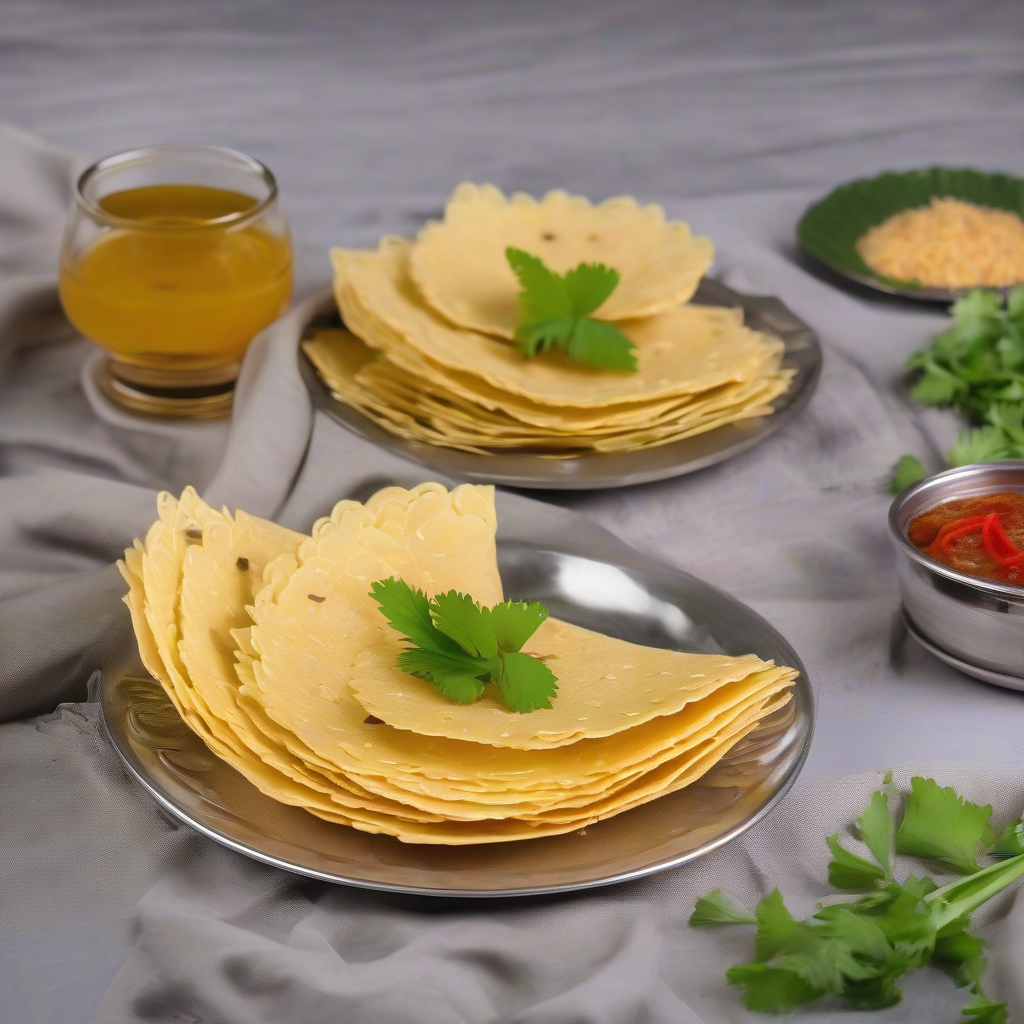Aam-azing Aam Papad: Your Desi Guide to Sweet Mango Leather!
Namaste Doston! Kem cho? Sat Sri Akal! Aadaab! Chef Curry Do’pyaza here, back in your kitchens (and hearts!) with a recipe that screams summer, nostalgia, and pure, unadulterated deliciousness. Today, we’re diving into the world of Aam Papad, that sweet, tangy, chewy mango leather that takes you right back to childhood.
Aam Papad isn’t just a snack; it’s a tradition. It’s sunshine captured on a plate. We lovingly prepare it during the hot summer months when mangoes are bursting with flavor. You will see it being lovingly served during festive occasions like Diwali, Holi, and even Raksha Bandhan. It is a sweet treat to share with loved ones. It’s the taste of home, no matter where you are in the world.
A Little Trip Down Memory Lane
Aam Papad’s history is as rich and golden as the mangoes it’s made from. While the exact origins are shrouded in delicious mystery, it’s believed that this method of preserving mangoes has been around for centuries in the Indian subcontinent. Our ancestors, with their ingenious ways of using nature’s bounty, figured out how to transform the fleeting sweetness of mangoes into a treat that could be enjoyed year-round.
Let’s Get Cooking!
Preparation Time: 20 minutes
Cooking Time: 3-4 days (mostly sun-drying time!)
Ingredients:
- Ripe Mangoes (Pakka Aam): 2 kg (Use the sweetest, most fragrant mangoes you can find! Alphonso, Kesar, or even local varieties work beautifully)
- Sugar (Cheeni): 1/2 cup (Adjust to your taste and the sweetness of your mangoes)
- Cardamom Powder (Elaichi Powder): 1/4 teaspoon (Optional, but adds a lovely aromatic touch)
- Ghee or Oil (Tel): For greasing the surface
Step-by-Step Instructions:
- Mango Magic: First, wash your mangoes well. Peel them and chop the juicy flesh away from the seed. Put the mango chunks into a blender or food processor. Blend until you have a smooth, luscious pulp.
-
Sweet Symphony: Pour the mango pulp into a large, heavy-bottomed pan (kadai). Add the sugar and cardamom powder (if using).
-
Gentle Simmer: Place the pan over medium heat. Stir constantly to prevent sticking and burning. Cook the mixture until it thickens slightly and the sugar is completely dissolved. This usually takes about 15-20 minutes. You will see the mixture reducing in volume.
-
Sun-Kissed Goodness: Grease a large, flat surface. Traditionally, we use a clean, large plate (thali) or a plastic sheet. You can also use parchment paper. Pour a thin, even layer of the mango mixture onto the greased surface. Remember, the thinner the layer, the faster it will dry!
-
Patience is Key: Cover the surface with a thin, clean muslin cloth or net to protect it from dust and insects. Place it in direct sunlight for 2-3 days, or until the Aam Papad is dry to the touch and no longer sticky. Bring it inside at night to protect it from moisture.
-
Layer Up (Optional): For a thicker Aam Papad, you can add another layer of the mango mixture after the first layer has partially dried. Repeat the drying process.
-
Slice and Enjoy: Once the Aam Papad is completely dry, gently peel it off the surface. Cut it into your desired shapes – squares, diamonds, or even fun shapes for the kids! Store in an airtight container at room temperature.
Chef Curry’s Top Tips:
- Sweetness Check: Taste the mango pulp before adding sugar. If the mangoes are very sweet, you may need to reduce the amount of sugar.
- Sun Power: The intensity of the sun affects the drying time. In hotter climates, it may dry faster.
- Even Drying: Make sure the layer of mango pulp is even to ensure uniform drying.
- Storage Secrets: Store Aam Papad in an airtight container to prevent it from becoming sticky or attracting moisture.
Cooking It Your Way:
- Gas Stove/Induction Stove: Follow the pan method described above. Be extra careful to stir constantly to prevent burning.
- Oven: You can dry the Aam Papad in a low oven (around 170°F or 75°C) with the door slightly ajar to allow moisture to escape. This will take several hours.
- Dehydrator: A dehydrator is perfect for making Aam Papad! Follow the manufacturer’s instructions for drying fruit leather.
- Microwave: I wouldn’t recommend this method as it’s difficult to control the drying process and you risk burning the mixture.
Nutritional Nuggets (per serving, approximate):
- Calories: 50-70
- Carbohydrates: 12-18g
- Sugar: 10-15g
- Fiber: 1-2g
Please note that these values are approximate and can vary depending on the mango variety and amount of sugar used.
Serving Suggestions:
- Enjoy it as a sweet treat on its own!
- Roll it up and cut it into bite-sized pieces for a fun snack.
- Add it to your lunchbox for a taste of home.
- Serve it as part of a traditional Indian sweet platter.
- Use it as a topping for ice cream or yogurt.
Your Turn!
Now that you have the secret recipe, it’s time to unleash your inner chef and create your own Aam-azing Aam Papad! Gather your ingredients, soak up the sunshine, and share the sweet joy with your friends and family. This is a recipe that’s meant to be shared, enjoyed, and passed down through generations. Happy cooking, and may your Aam Papad be as golden and delicious as your memories!
